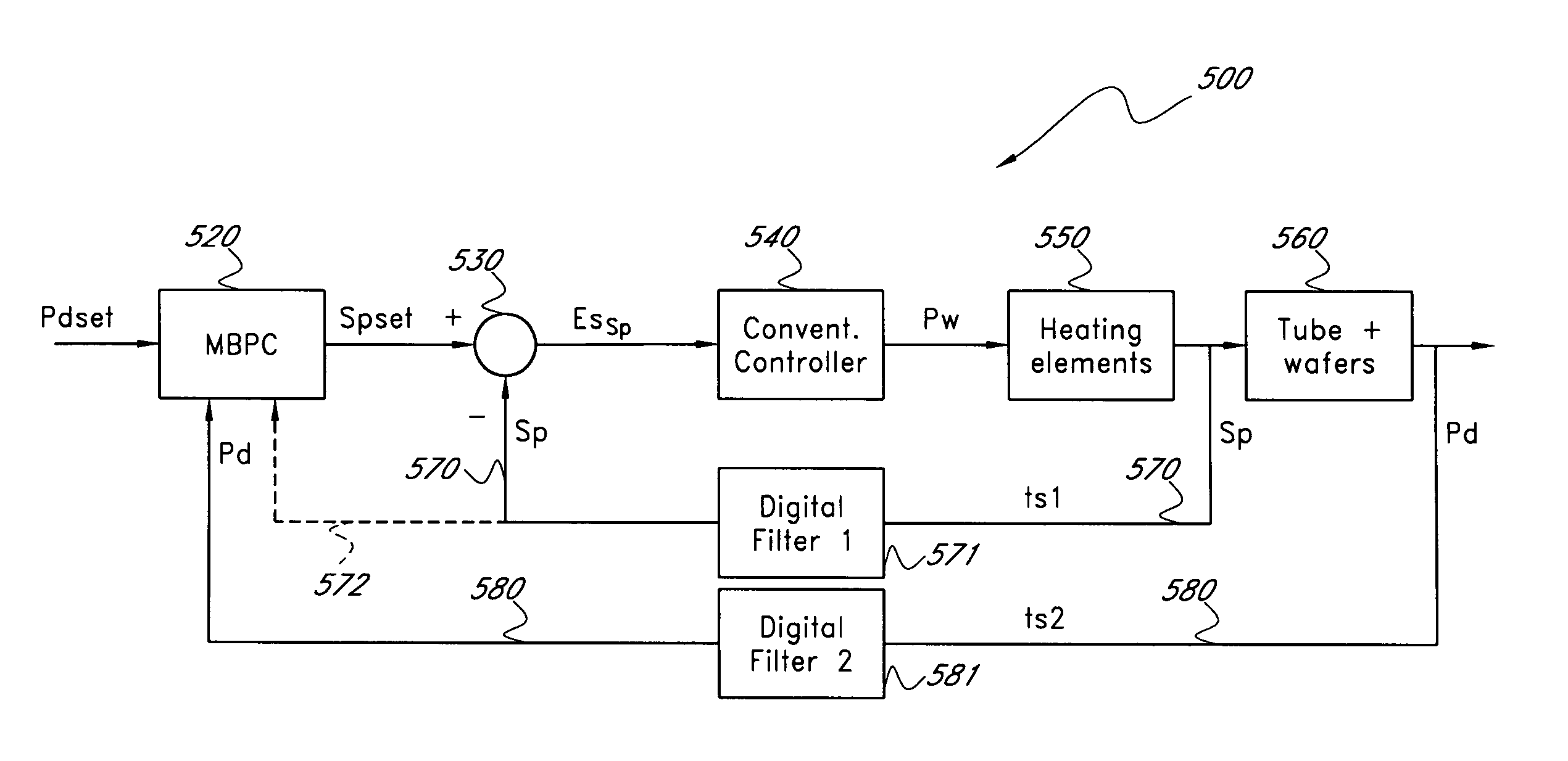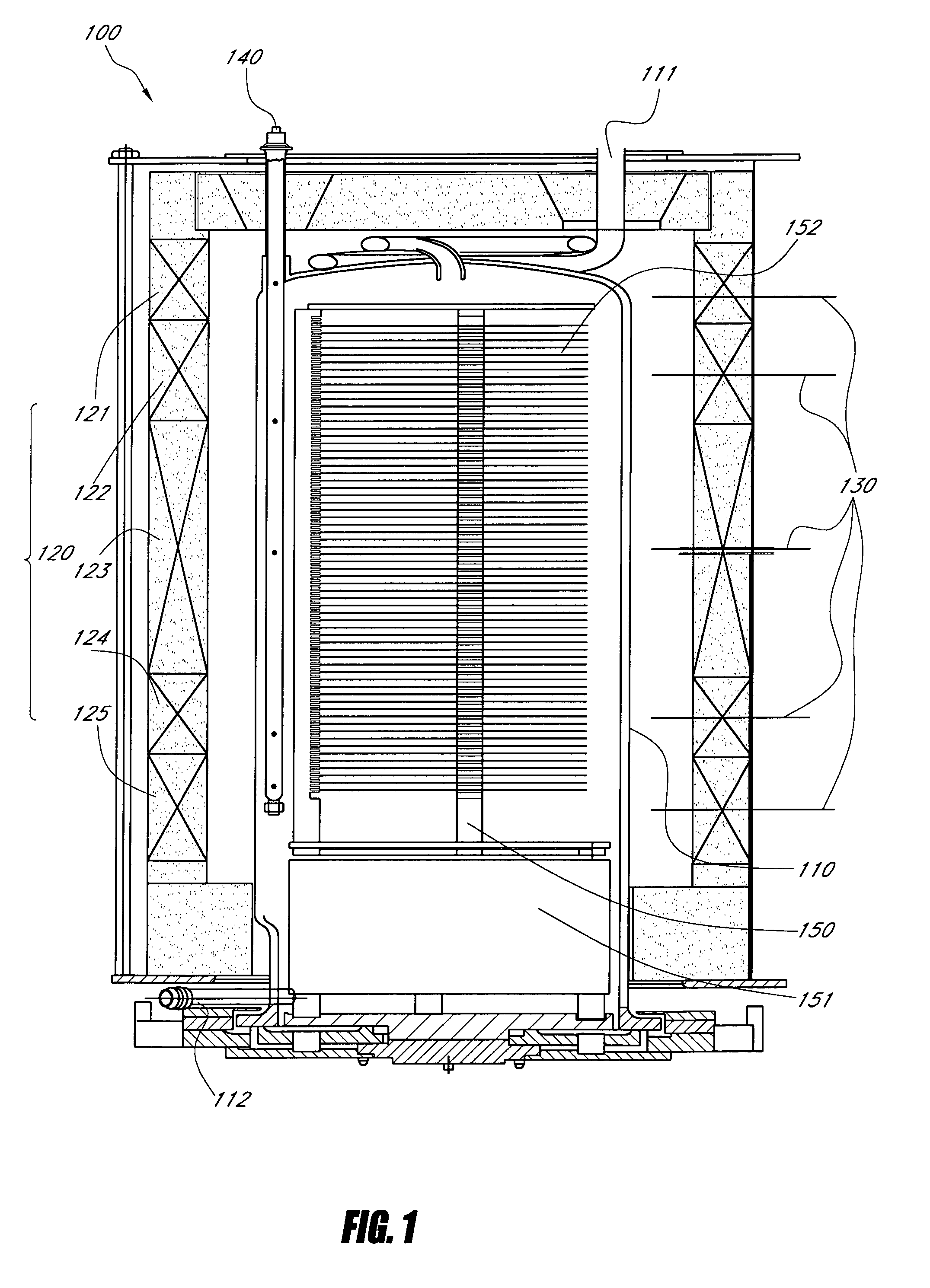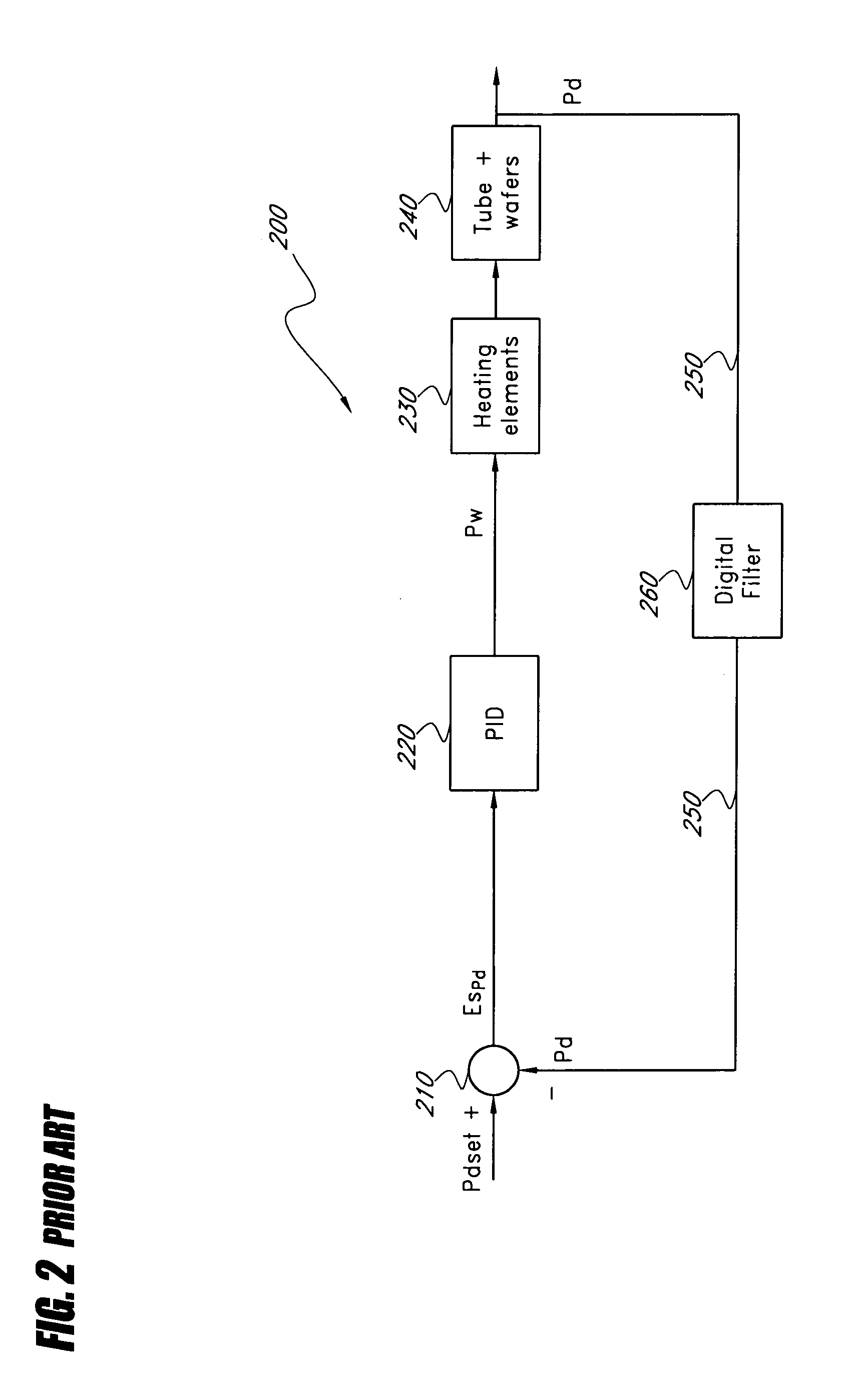Hybrid cascade model-based predictive control system
a predictive control system and cascade model technology, applied in automatic controllers, mechanical control devices, structural/machine measurement, etc., can solve the problems of other previous approaches have practical drawbacks related to complexity and computational requirements, and achieve the effect of reducing ramp, reducing online computing overhead, and improving dynamic control performan
- Summary
- Abstract
- Description
- Claims
- Application Information
AI Technical Summary
Benefits of technology
Problems solved by technology
Method used
Image
Examples
Embodiment Construction
[0038]A typical vertical thermal reactor 100 is shown in FIG. 1. The vertical thermal reactor 100 includes a long quartz or silicon carbide process tube 110 delimiting a process region. A batch of wafers 152, accommodated in a wafer boat 150, placed on a pedestal 151 for support and thermal isolation, are inserted into the process tube 110. The process tube 110 includes an inlet 111 and an outlet 112 for process gas. The process tube is surrounded by a heating element 120 having multiple zone electric heating coils 121 to 125. Each zone has one or more temperature sensors. In FIG. 1, each zone has a spike ThermoCouple (TC) 130 and a “profile” or paddle ThermoCouple (TC) 140. The spike TC produces a spike TC signal corresponding to a spike temperature. The paddle TC produces a paddle TC signal corresponding to a paddle temperature. The spike TCs 130 are located outside the process tube 110 relatively near the heating element and the paddle TCs are located inside the tube 110 relative...
PUM
 Login to View More
Login to View More Abstract
Description
Claims
Application Information
 Login to View More
Login to View More - R&D
- Intellectual Property
- Life Sciences
- Materials
- Tech Scout
- Unparalleled Data Quality
- Higher Quality Content
- 60% Fewer Hallucinations
Browse by: Latest US Patents, China's latest patents, Technical Efficacy Thesaurus, Application Domain, Technology Topic, Popular Technical Reports.
© 2025 PatSnap. All rights reserved.Legal|Privacy policy|Modern Slavery Act Transparency Statement|Sitemap|About US| Contact US: help@patsnap.com



